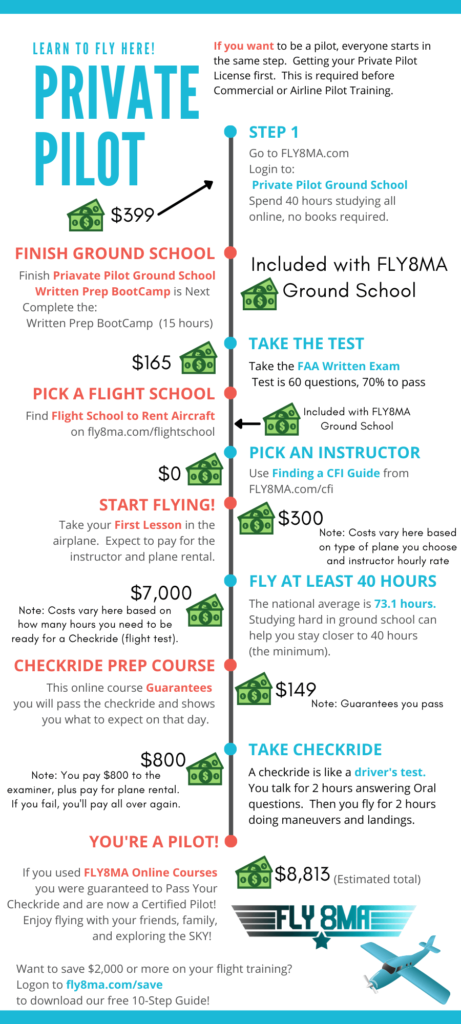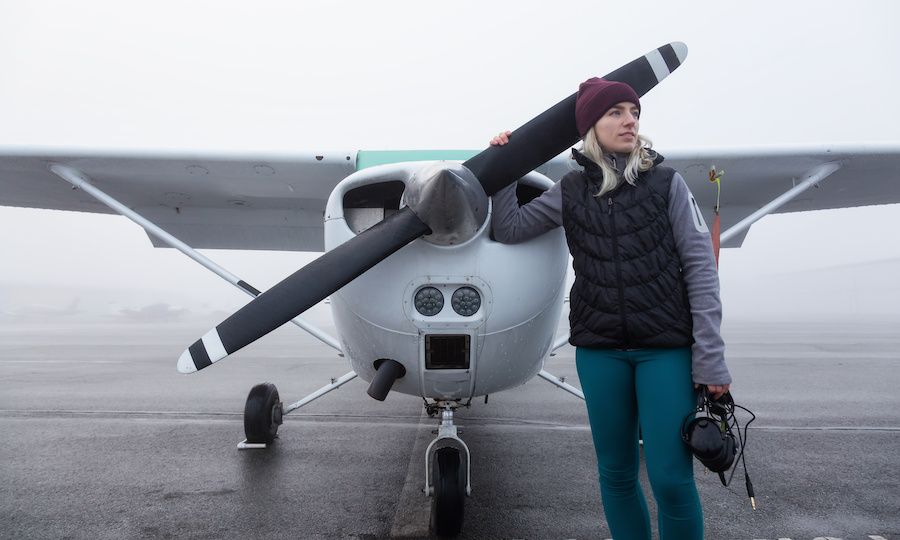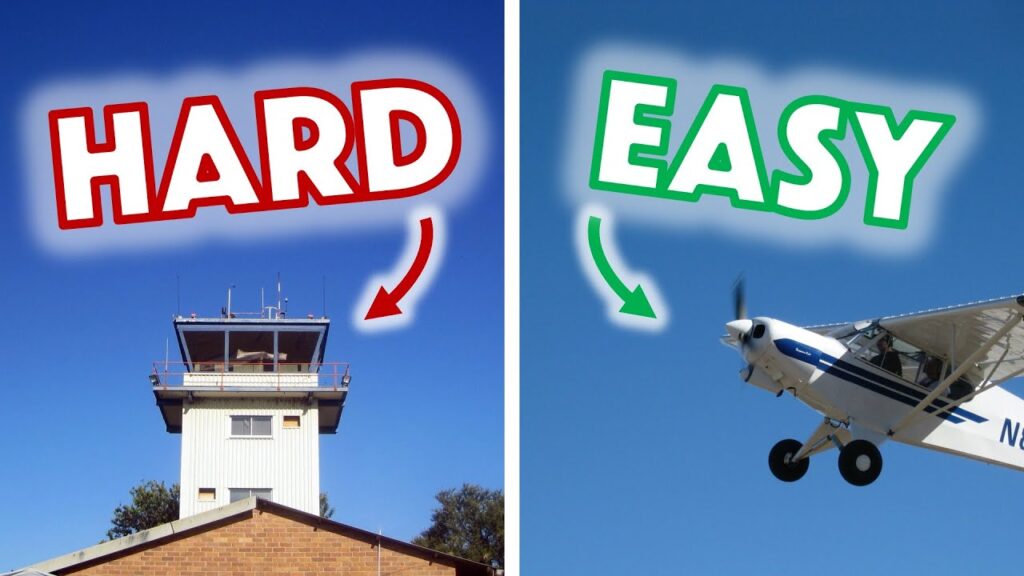Are you ready for sky-high adventures and the thrill of piloting your own aircraft? If you’ve ever wondered how much it costs to obtain a private pilot’s license in the Lone Star State of Texas, you’ve come to the right place. In this article, we’ll shed light on the financial aspects of pursuing your pilot dreams in Texas, from the initial training fees to the necessary exams and certifications. So fasten your seatbelt and get ready to embark on a journey towards obtaining your private pilot’s license in Texas!

This image is property of fly8ma.com.
Factors Affecting Cost
Number of Flight Hours
One of the biggest factors that affects the cost of getting a private pilot’s license is the number of flight hours required by the Federal Aviation Administration (FAA). The FAA mandates a minimum of 40 flight hours of training, but most students require more time to become proficient and confident pilots. The more flight hours you need to complete your training, the higher the overall cost will be.
Type of Aircraft
The type of aircraft you choose to train in can also significantly impact the cost of obtaining your private pilot’s license. Different aircraft models have varying rental rates, fuel consumption rates, and maintenance costs. If you opt for a more advanced or complex aircraft for your training, it will likely come with a higher price tag. It’s crucial to consider your training goals and budget when selecting an aircraft.
Instructor Fees
Instructor fees are another essential factor to consider when calculating the cost of your private pilot’s license. The rates for flight instructors can vary depending on their level of experience and qualifications. Highly experienced instructors may charge higher rates, but they can also provide superior instruction and guidance. The expertise and skill of your instructor will play a crucial role in your overall training experience and proficiency as a pilot.
Ground School Costs
In addition to flight training, ground school is an essential component of becoming a private pilot. Ground school covers theoretical knowledge in areas such as aerodynamics, aviation regulations, aircraft systems, and navigation. These classes can be held in a classroom or online and often have associated tuition fees. It’s important to include ground school costs in your overall budget for obtaining a private pilot’s license.
Written Examination Fees
Before obtaining your private pilot’s license, you must pass written examinations administered by the FAA. These exams assess your knowledge of aviation rules, regulations, and procedures. There are fees associated with taking these exams, which vary depending on the testing center and location. It’s essential to factor in these fees when budgeting for your pilot training.
Training Expenses
Flight Training Costs
Flight training costs include all expenses directly related to your flight lessons, such as the instructor’s time, aircraft rental, and fuel costs. These costs can add up quickly, especially if you require additional flight hours to reach the proficiency level needed for your license. It’s crucial to consider the current rates for flight training in your area to accurately estimate these expenses.
Aircraft Rental Fees
A significant portion of your training expenses will be dedicated to aircraft rental fees. Rental rates depend on the type and model of the aircraft you choose, as well as the duration of your training flights. Typically, rental rates are charged by the hour, so the longer your flights, the more you’ll need to budget for aircraft rental fees. It’s important to find a reputable flight school that offers competitive rates for aircraft rental.
Fuel Costs
Fuel costs are directly tied to the number of flight hours you accumulate during your training. Aircraft fuel can be a substantial expense, especially if you’re training for an extended period. Fuel prices can vary depending on location and market conditions. It’s essential to consider the current fuel prices in your area and estimate the number of flight hours you’ll need, to accurately budget for fuel costs.
Insurance Costs
Some flight schools may require you to purchase insurance coverage during your training. While this expense may not apply to all students, it’s essential to inquire about potential insurance costs when researching flight schools. Insurance fees and coverage options can vary, so it’s advisable to consult with an aviation insurance specialist to find a policy that suits your needs.

This image is property of i0.wp.com.
Fixed Costs
Medical Certificate Fee
To obtain a private pilot’s license, you must hold a valid medical certificate issued by an authorized aviation medical examiner. There are fees associated with applying for and obtaining this medical certificate. The cost of the medical certificate can vary depending on the examiner and the type of examination required. It’s crucial to factor in this expense when budgeting for your pilot training.
Knowledge Test Fee
Before receiving your private pilot’s license, you must pass a knowledge test administered by the FAA. This test evaluates your understanding of key aviation topics, such as airspace regulations, navigation techniques, weather patterns, and aerodynamics. There are fees associated with taking the knowledge test, which can vary depending on the testing center and location. It’s important to include these fees in your overall budget for obtaining a private pilot’s license.
Practical Test Fee
Once you have completed your flight training and passed the written examinations, you need to undergo a practical test, also known as a checkride. This comprehensive evaluation assesses your ability to operate an aircraft safely and efficiently. There are fees associated with taking the practical test, which can vary depending on the designated FAA examiner. It’s crucial to include these fees in your budgeting process.
Flight Physical Examination
To ensure the safety of flight operations, aspiring pilots must undergo a flight physical examination performed by a certified aviation medical examiner. This examination assesses your physical fitness to fly an aircraft, including factors such as vision, hearing, overall health, and medical history. The cost of the flight physical examination may vary depending on the examiner and the required tests. It’s important to consider this expense when planning for your pilot training.
Optional Costs
Headset and Equipment
While some flight schools may provide headsets for their students, it’s recommended to invest in your own aviation headset for training and future flights. A quality headset can enhance your communication with air traffic control and reduce noise interference. The cost of headsets can vary depending on the brand and features. It’s crucial to budget for this optional expense if you prefer to have your own equipment.
Textbooks and Study Materials
To successfully complete your pilot training, you’ll need various textbooks and study materials that cover essential aviation topics. These resources provide the necessary theoretical knowledge required for your written exams and flight operations. The cost of textbooks and study materials can vary depending on the specific books and materials required by your flight school. It’s important to include these expenses when budgeting for your training.
Chart Supplements
Chart supplements, such as sectional charts, airport facility directories, and navigation charts, are essential tools for flight planning and navigation. While some flight schools may provide access to these resources, it’s advisable to have your own copies for reference and practice. The cost of chart supplements can vary depending on the charts and publications you need. It’s important to include these expenses in your overall budget.
Flight Planning Tools
Flight planning tools, such as electronic flight bags (EFBs) and aviation apps, can be beneficial additions to your pilot training. These tools provide access to real-time weather information, flight planning software, and navigation aids. The cost of flight planning tools can vary depending on the specific device or app you choose. It’s important to research and select the tools that best meet your needs and budget.

This image is property of cdn-apbmf.nitrocdn.com.
Additional Expenses
Transportation Costs
Transportation costs are often overlooked when budgeting for pilot training. Depending on the location of your flight school and the convenience of transportation options, you may need to account for expenses such as fuel or public transportation fees. It’s important to consider these additional costs when estimating the overall cost of obtaining your private pilot’s license.
Accommodation Costs
If your flight school is located far from your place of residence, you may need to consider accommodation costs during your training. This can include expenses for hotel stays, apartment rentals, or other forms of temporary housing. The duration of your training and the local rental rates will impact your accommodation costs. It’s crucial to research and plan for these expenses in advance.
Meals and Food Expenses
During your training, you’ll likely spend long hours at the flight school and may need to rely on nearby restaurants, cafes, or food delivery services for meals and snacks. These expenses can add up, especially if you’re training extensively for an extended period. It’s important to budget for meals and food expenses to ensure you have adequate nutrition during your training.
Landing and Facility Fees
Some airports may charge landing fees or facility fees for using their runways and facilities during your training. The costs of these fees can vary significantly depending on the airport and its policies. It’s essential to inquire about potential landing and facility fees at your chosen flight schools and airports to accurately budget for these expenses.
Financial Aid Options
Scholarships
Scholarships are a valuable financial aid option for aspiring pilots. Numerous organizations and aviation-related foundations offer scholarships to help cover the costs of pilot training. These scholarships are typically offered based on various criteria, such as academic performance, financial need, community involvement, or specific aviation goals. Researching and applying for aviation scholarships can significantly reduce the financial burden of obtaining a private pilot’s license.
Loans
Loans are another financial aid option that can assist in funding your pilot training. Many financial institutions offer student loans specifically designed for aviation programs. It’s essential to carefully review the terms and conditions of any loan offers and consider the impact of interest rates and repayment plans on your long-term financial goals. Loans should be approached with careful consideration and a clear plan for repayment.
Grants
Government agencies, aviation organizations, and aviation-specific foundations may offer grants to support individuals pursuing pilot training. These grants can provide financial assistance in covering expenses such as flight training, tuition fees, or specialized equipment. Researching and applying for grants applicable to your training goals can provide opportunities for additional funding.
Veterans Benefits
If you have served in the military, you may be eligible for veterans benefits that can help finance your pilot training. The GI Bill, for example, offers educational benefits for veterans, including coverage for pilot training programs. Veterans can explore the specific benefits and qualifications available to them through the Department of Veterans Affairs (VA) and other related agencies.

This image is property of pilotinstitute.com.
Comparing Costs in Different Flight Schools
When considering flight schools, it’s essential to compare the costs associated with obtaining your private pilot’s license. Factors such as price per flight hour, instructor rates, aircraft rental rates, and additional fees can vary significantly from one school to another. By carefully comparing these costs, you can make an informed decision about which flight school aligns with your budget and training goals.
Price Per Flight Hour
Flight schools charge different rates per flight hour based on factors such as aircraft types, instructor qualifications, and overhead expenses. It’s crucial to obtain a clear breakdown of the cost per flight hour and understand what is included in that rate. Comparing the price per flight hour across different flight schools will help you determine which offers the best value for your investment.
Instructor Rates
Instructor rates can vary depending on the level of experience, certifications, and reputation of the instructors. Highly experienced and qualified instructors may charge higher rates, but they can provide exceptional training and guidance. It’s important to consider the qualifications and teaching methods of the flight instructors when evaluating the instructor rates at different flight schools.
Aircraft Rental Rates
Aircraft rental rates vary depending on factors such as the type of aircraft and local market conditions. Comparing the rental rates for the specific aircraft models you’ll be training in will help you gauge the affordability and value offered by each flight school. It’s important to consider the reliability and maintenance history of the aircraft when comparing rental rates.
Additional Fees
Additional fees, such as administrative fees, membership fees, or exam proctoring fees, can significantly impact the overall cost of obtaining your private pilot’s license. It’s important to inquire about any potential additional fees that may arise during your training and factor them into your budget. Comparing the additional fees across various flight schools will ensure you have a comprehensive understanding of the total cost.
Tips to Reduce Costs
Maintain a Consistent Training Schedule
Consistency in your training schedule can help reduce costs in the long run. By committing to a regular training routine, you’ll build and maintain your aviation skills more efficiently, reducing the number of additional flight hours required to reach proficiency. Flying regularly also allows you to progress more quickly and retain knowledge between lessons, ultimately saving both time and money.
Practice Outside of Flight Hours
While flight hours are essential for gaining practical experience, there are several aviation-related activities you can practice outside of actual flight time. This includes studying aviation theory, reviewing flight manuals, practicing flight planning, and using flight simulators. By utilizing these resources outside of flight hours, you can reinforce your knowledge and skills effectively, potentially reducing the number of flight hours needed to achieve your goals.
Consider Group Lessons
Some flight schools offer group lessons, where multiple students share the cost of an aircraft and instructor. Group lessons can significantly reduce the individual cost per student, making pilot training more affordable. Additionally, group lessons offer the opportunity to learn from and collaborate with other aspiring pilots, creating a supportive learning environment.
Shop Around for Discounts
Before committing to a flight school, it’s essential to research and compare different schools’ prices and promotions. Some flight schools may offer discounts for upfront payments, package deals, or promotional rates for certain periods. By actively searching for these discounts, you can save money without compromising the quality of your training.

This image is property of i.ytimg.com.
Example Cost Breakdown
To provide a realistic example of cost breakdown, let’s consider the following breakdown for obtaining a private pilot’s license in Texas:
Flight Hours
- Minimum required flight hours: 40 hours
- Estimated additional flight hours: 10 hours
- Average flight instructor rate: $70 per hour
- Total flight instructor fees: $2,800
Aircraft Rental
- Average rental rate per hour: $150 per hour
- Estimated aircraft rental costs: $6,000
Instructor Fees
- Estimated ground school fees: $500
Written Exam Fees
- Knowledge test fee: $150
- Practical test fee: $500
Ground School Costs
- Ground school tuition: $1,000
Based on this example, the estimated total cost for obtaining a private pilot’s license in Texas would be approximately $11,950. It’s important to note that these numbers can vary depending on location, flight school choice, individual progress, and additional expenses.
Conclusion
Obtaining a private pilot’s license is an exciting and rewarding journey, but it does come with various costs. Factors such as flight hours, type of aircraft, instructor fees, ground school costs, and examination fees all contribute to the overall expense. Additionally, optional costs, fixed costs, and additional expenses should not be overlooked when calculating the total cost.
Fortunately, there are financial aid options available such as scholarships, loans, grants, and veterans benefits that can help alleviate the financial burden. It’s crucial to thoroughly research and compare costs when selecting a flight school, considering factors such as price per flight hour, instructor rates, aircraft rental rates, and additional fees.
By following tips to reduce costs, such as maintaining a consistent training schedule, practicing outside of flight hours, considering group lessons, and shopping around for discounts, you can further optimize your budget.
Remember, the cost of obtaining a private pilot’s license is an investment in your aviation skills and future. By planning, budgeting, and exploring financial aid options, you can make your dream of flying a reality while taking into account the various factors that affect the overall cost.
